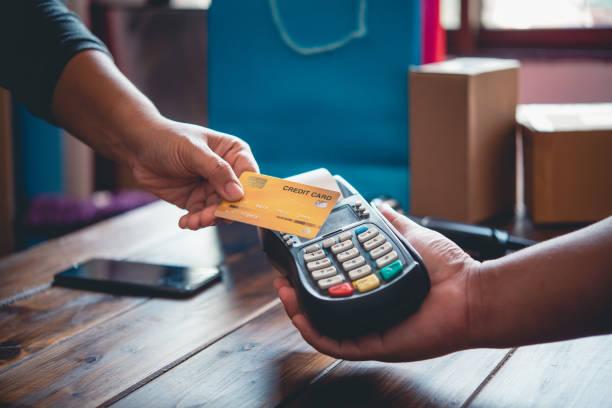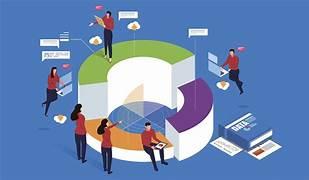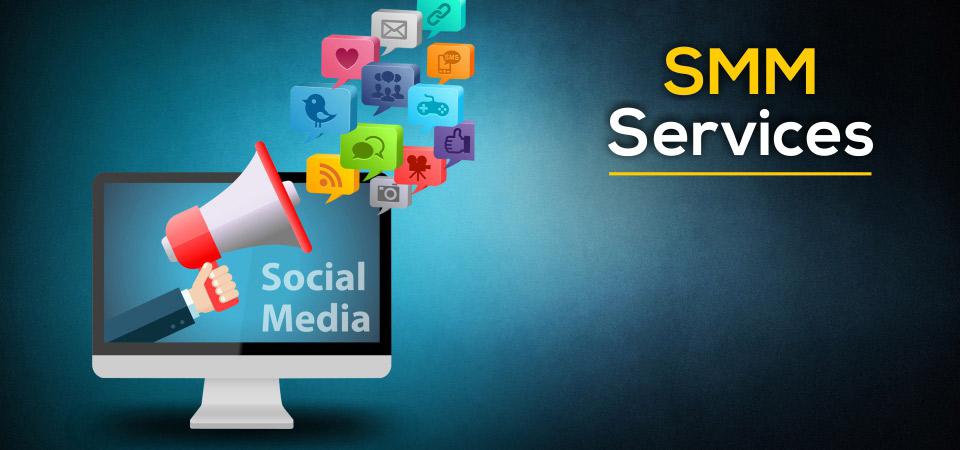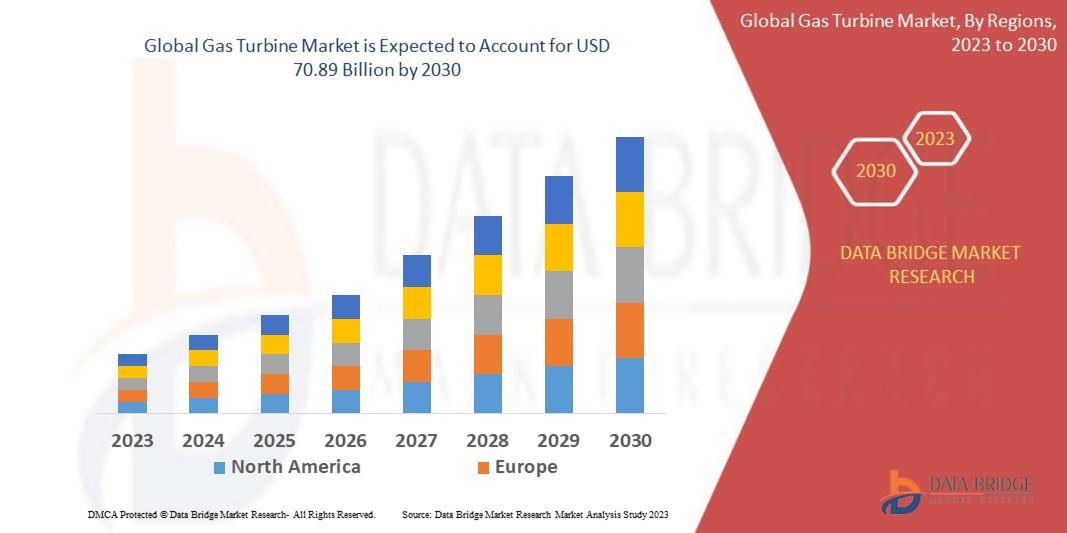How Digital Business Cards Are Replacing Traditional Paper Cards

Remember that moment when you reached into your wallet for a business card, only to find crumpled, coffee-stained rectangles of regret? Or worse—you handed someone your card and watched them immediately lose it in their overstuffed bag, never to be seen again. We've all been there.
But here's the thing: while you were digging through your wallet, someone else just tapped their phone and shared their entire professional profile in two seconds flat. Welcome to the era of digital business cards, where networking has gotten a serious upgrade.
The shift from paper to digital isn't just about being trendy or tech-savvy. It's about fundamentally changing how we connect, share information, and build professional relationships in a world that's increasingly mobile-first. Traditional business cards are quickly becoming relics of the past, and the transformation is happening faster than most people realize.
The Death of the Paper Card: Why Traditional Cards Are Becoming Obsolete
Let's be honest—traditional business cards have always had problems. You print 500 cards, change your phone number three months later, and suddenly you're stuck with a pile of outdated paper. Or you attend a conference, collect dozens of cards, and then spend hours manually entering contact information into your phone or CRM system.
The average professional loses or throws away 88% of the business cards they receive within a week. That's not just wasteful—it's a networking nightmare. You meet someone perfect for a collaboration, exchange cards over coffee, and by the time you get home, their card has vanished into the void.
Paper cards also carry a hidden environmental cost. Americans alone exchange approximately 10 billion business cards annually, and about 8 billion of those end up in the trash within a week. That's a lot of trees sacrificed for brief introductions that lead nowhere. In an age where sustainability matters to consumers and businesses alike, this wastefulness is increasingly hard to justify.
What Exactly Are Digital Business Cards?
Digital business cards are virtual contact cards that can be created, shared, and stored electronically. Think of them as your professional profile condensed into a shareable digital format that lives on your smartphone, tablet, or computer.
Unlike their paper predecessors, digital cards aren't static. They're dynamic, interactive profiles that can include your name, title, company, phone number, email, website, social media links, portfolio samples, videos, and even scheduling links. Some platforms like HiHello, Popl, Dot, Beaconstac, and Mobilo allow you to create multiple cards for different contexts—one for your corporate job, another for your side hustle.
The technology behind digital cards varies. Some use QR codes that people scan with their phone cameras. Others leverage NFC (Near Field Communication) technology, allowing you to share your card with a simple tap of phones. There are also virtual cards that can be shared via email, text message, LinkedIn, or other messaging platforms. Apple Wallet and Google Wallet now support digital business cards, making them accessible to billions of smartphone users worldwide.
How Digital Cards Actually Work in Real Life
The practical magic of digital business cards lies in their simplicity. When you meet someone at a networking event, conference, or even a coffee shop, you can share your card in seconds. With QR code-based cards, you simply display your unique code on your phone screen, and the other person scans it with their camera. Instantly, all your contact information appears on their device, ready to be saved.
NFC-enabled cards take it even further. If both phones support NFC (which most modern smartphones do), you literally just tap phones together. No app downloads, no scanning—just tap and done. It's as seamless as a contactless payment, except you're exchanging professional information instead of money.
The recipient doesn't always need a special app to receive your information. Many digital card platforms generate web-based cards that open in any browser. This means compatibility isn't an issue—whether someone has an iPhone, Android, or even accesses the link later on their laptop, your card displays perfectly. Services like Linq, CamCard, and Haystack have made receiving digital cards completely friction-free.
The Environmental Impact: Going Green with Your Networking
Here's something that might surprise you: the environmental benefits of digital business cards go far beyond just saving paper. The entire lifecycle of traditional cards—from forestry to printing to shipping to disposal—creates a significant carbon footprint.
A single paper business card generates approximately 6 grams of CO2 during its lifecycle. Multiply that by the billions produced annually, and you're looking at thousands of tons of carbon emissions. Digital cards, by contrast, have virtually zero environmental impact once created. No trees cut down, no printing chemicals, no fuel burned for shipping boxes of cards across the country.
Companies like Canva and Vista have recognized this shift and now offer digital card design tools alongside their traditional printing services. But forward-thinking businesses are going entirely digital. Consulting firms, tech startups, and eco-conscious brands are proudly declaring themselves "paper-card-free," using it as a selling point that aligns with their sustainability values.
For businesses with ESG (Environmental, Social, and Governance) commitments, eliminating paper business cards is an easy win. It's a tangible action that demonstrates environmental responsibility while also cutting costs. The planet wins, your budget wins, and your brand reputation gets a boost.
Cost Savings: The Financial Case for Going Digital
Let's talk money. A decent set of 500 traditional business cards costs anywhere from $20 to $150, depending on quality and design. Change jobs, get promoted, or update your phone number? That's another $20 to $150. Most professionals go through several iterations of business cards throughout their careers, spending hundreds or even thousands of dollars over time.
Digital business cards typically cost between $0 and $15 per month for individual users, with many excellent free options available. Companies can get enterprise plans for their entire team, often for less than what they'd spend printing cards for a single quarter. Platforms like Blinq offer free basic plans, while premium services like Popl Pro cost around $6 monthly.
But the real savings come from efficiency. Think about the time you'd spend designing cards, placing orders, waiting for delivery, and then redistributing cards to your team when details change. Digital cards update instantly across all platforms. Change your email address once in your digital card dashboard, and everyone who received your card now has the updated information automatically.
For sales teams and businesses that rely heavily on networking, these savings multiply quickly. A company with 50 employees who each order business cards three times per year could easily spend $7,500 annually on printing alone. Switch to digital, and that cost drops to a few hundred dollars maximum.
Always Up-to-Date: The Power of Real-Time Updates
Here's one of the most underrated advantages of digital business cards: they're never outdated. Remember when you got promoted but still had 300 cards with your old title? Or when you changed companies and your entire card stockpile became worthless?
With digital cards, you update your information once, and the changes propagate everywhere. Everyone who saved your digital card to their contacts or digital wallet sees the current information. It's like having a living document that evolves with your career.
This feature is particularly valuable for professionals in transition. Entrepreneurs launching new ventures, freelancers taking on multiple clients, or employees switching between projects can adjust their digital cards to reflect their current focus. You can even create multiple cards for different audiences—one for corporate clients, another for creative collaborations, and a third for volunteer work.
Platforms like Clinked and V1CE take this further by allowing you to schedule information updates or trigger specific content based on context. Attending a tech conference? Your card can automatically emphasize your technical skills. Meeting with creative agencies? Switch the focus to your design portfolio. This level of customization is impossible with printed cards.
Enhanced Information Sharing: Beyond Just Contact Details
Traditional business cards are limited by physical space. You get a 3.5 by 2-inch rectangle to convey your professional identity. Digital cards break these constraints completely.
Your digital card can include links to your LinkedIn profile, portfolio website, Instagram, YouTube channel, or any other online presence that matters to your profession. A photographer can embed their best shots. A musician can include streaming links. A consultant can link to case studies and client testimonials. The possibilities are genuinely limitless.
Video introductions are becoming increasingly popular on digital cards. Imagine handing someone your card and having them watch a 30-second video of you explaining what you do. It's personal, memorable, and far more engaging than text alone. Services like Inlytics and Uniqode support rich media integration seamlessly.
You can also include actionable buttons like "Schedule a Meeting," which connects directly to your Calendly or Microsoft Bookings. This removes friction from the follow-up process. Instead of the traditional "let's connect soon" that often goes nowhere, your contact can book time with you immediately while the conversation is still fresh.
Analytics and Insights: Tracking Your Networking Effectiveness
Here's something paper cards could never do: tell you who actually saved your information and when they viewed it. Digital business cards come with built-in analytics that transform networking from a blind activity into a measurable process.
Most digital card platforms show you when someone saves your card, when they view it again later, which links they click, and how they found you. This data is incredibly valuable for professionals who need to track their networking ROI. Sales professionals can see which prospects engaged with their information. Job seekers can identify which recruiters showed genuine interest.
Companies like Covve and Nimble integrate digital card analytics with CRM systems, creating a seamless flow from first meeting to ongoing relationship management. When someone saves your card and clicks your portfolio link three times, that's a strong signal they're interested—and worth following up with.
These insights also help you refine your networking strategy. If nobody clicks your website link but everyone visits your LinkedIn, maybe your website needs work. If your card gets shared frequently, you know your information is valuable to others. This feedback loop helps you continuously improve your professional presentation.
Integration with CRM and Contact Management Systems
One of the biggest headaches with traditional business cards is the data entry nightmare. You come back from a conference with 50 cards and spend the next hour manually typing information into your phone or Salesforce. It's tedious, error-prone, and genuinely nobody's idea of a good time.
Digital business cards eliminate this problem entirely. When someone shares their digital card with you, their information can flow directly into your preferred contact management system. HubSpot, Salesforce, Microsoft Dynamics, Zoho, and dozens of other platforms now integrate with digital card services.
For sales teams, this integration is transformative. A sales rep meets a prospect at a trade show, exchanges digital cards, and that prospect immediately appears in the CRM with all relevant contact details, a timestamp of the meeting, and even notes about where they met. The rep can then trigger automated follow-up sequences without touching a keyboard.
Marketing teams benefit too. Digital card exchanges can be tracked as lead sources, helping companies understand which networking events generate the best prospects. When you can measure that the conference in Austin generated 47 new contacts and 12 qualified leads, you make better decisions about where to invest your networking time and budget.
Accessibility and Inclusivity Features
Digital business cards offer accessibility benefits that paper simply cannot match. For visually impaired professionals and their contacts, digital cards can be read aloud by screen readers. Text can be enlarged for easier reading. Color contrast can be adjusted for people with color blindness.
Language barriers also diminish with digital cards. Many platforms allow you to create multilingual versions of your card. A business professional working internationally can offer their card in English, Spanish, Mandarin, and Arabic—all in one shareable profile. The recipient chooses their preferred language, and the card displays accordingly.
For people with motor disabilities who might struggle with the fine motor control required to handle small paper cards, digital sharing is dramatically easier. A simple tap or scan is more accessible than fumbling with thin card stock. The technology creates a more inclusive networking environment for everyone.
Companies focused on diversity, equity, and inclusion are increasingly recognizing that digital business cards align with their values by removing physical barriers to professional connection. It's another reason why forward-thinking organizations are making the switch.
Security and Privacy Control
With traditional business cards, once you hand one out, you lose all control. That card can be photocopied, scanned, posted online, or passed around indefinitely. Your personal phone number and email are now in the wild, completely unprotected.
Digital business cards give you control over your information. Most platforms allow you to set permissions for who can see what. You might share your personal cell number with close professional contacts but only give a general office number to casual acquaintances. You can revoke access entirely if needed.
If you're dealing with spam or unwanted contact, you can update your digital card to change your email or phone number, and all previous shares automatically reflect this change. This level of control is impossible with paper cards sitting in hundreds of wallets across the country.
Enterprise digital card solutions include even more sophisticated security features. Admin dashboards allow companies to manage employee cards, ensure brand consistency, and revoke access when employees leave the organization. This prevents former employees from continuing to represent the company after their departure.
The Networking Experience: Making Better First Impressions
First impressions matter, and pulling out your phone to share a digital business card communicates something specific: you're modern, tech-savvy, and probably good at what you do. It's a small status signal that positions you as someone who embraces innovation.
The experience is also simply more memorable. When was the last time someone handed you a business card and you thought, "Wow, that was cool"? Probably never. But when someone taps their phone to yours and their complete professional profile appears instantly? That's memorable. It starts conversations and positions you as a person worth remembering.
Digital cards also enable instant reciprocity. With paper cards, exchange is sequential—you fumble in your wallet, they fumble in theirs. With digital cards, the exchange is simultaneous and smooth. Both people walk away with complete information, and neither has something to lose or forget to add to their contacts later.
Young professionals and Gen Z workers increasingly expect digital-first interactions. For them, receiving a paper business card can actually be off-putting—it suggests you're not digitally fluent. As this generation becomes a larger portion of the workforce, digital business cards will simply become the default expectation.
Industry Adoption: Who's Leading the Digital Card Revolution
The technology sector led the charge, as expected. Silicon Valley companies, startups, and tech consultancies were early adopters, viewing digital business cards as aligned with their innovative brand identities. Companies like Salesforce, HubSpot, and numerous SaaS startups made the switch years ago.
Creative industries followed quickly. Marketing agencies, design firms, and media companies appreciated the expanded creative possibilities digital cards offered. Being able to showcase portfolios, reels, and creative work directly through a business card made practical sense for these fields.
The real estate industry has embraced digital cards enthusiastically. Real estate agents need to share information quickly with numerous potential clients, update listings frequently, and maintain relationships over time. Digital cards with integrated property listings and virtual tour links have become standard tools for forward-thinking agents.
Even traditionally conservative industries like law and finance are making the transition. While adoption is slower here, younger partners and associates are pushing firms toward digital solutions. The pandemic accelerated this shift, as virtual networking made digital contact sharing the only practical option.
Challenges and Limitations of Digital Business Cards
Despite all the benefits, digital business cards aren't perfect. The most obvious limitation is the digital divide. Not everyone has a smartphone, particularly older professionals or people in certain industries. When you encounter someone who doesn't have the technology to receive a digital card, you're stuck.
Battery life is another practical concern. If your phone dies at a networking event, you can't share your card. Paper cards never run out of battery. This is why some professionals still carry a few traditional cards as backup—a hybrid approach that covers all scenarios.
Some networking contexts still favor physical cards. Certain cultures and industries place value on the ritual of exchanging physical business cards. In Japan, for example, the ceremonial presentation and acceptance of meishi (business cards) carries social significance that digital cards can't replicate.
There's also a learning curve, particularly for older professionals who aren't comfortable with new technology. While digital cards are generally user-friendly, there's still initial resistance from people who've used paper cards successfully for decades. Change management is real, and organizations need to support employees through the transition.
Choosing the Right Digital Business Card Platform
The digital business card market is crowded with options, each offering slightly different features. Free options like Wave and Knowee provide basic functionality that's perfect for individual professionals just starting out. They typically include standard contact information, social links, and simple QR code sharing.
Mid-tier platforms like Popl, Linq, and Dot cost between $5 and $15 monthly and offer NFC cards, enhanced analytics, and better customization options. These are ideal for professionals who network frequently and want detailed insights into their connections.
Enterprise solutions from Blinq, Mobilo, and Beaconstac provide centralized management for entire organizations, ensuring brand consistency across all employee cards. They include advanced analytics, CRM integration, and admin controls that larger companies need.
When choosing a platform, consider what matters most to you. If you're a creative professional, prioritize platforms with strong portfolio integration. If you're in sales, look for robust CRM connections. If you network at tech conferences, ensure the platform works seamlessly with Apple Wallet and Google Wallet.
Making the Transition: How to Switch from Paper to Digital
Transitioning from paper to digital business cards doesn't have to be complicated. Start by choosing a platform that fits your needs and budget. Most offer free trials, so experiment with a few before committing.
Design your digital card thoughtfully. Include all the essential information you'd put on a paper card, plus relevant extras like social profiles and portfolio links. Keep the design clean and professional—just because you can include 20 links doesn't mean you should.
Practice the sharing process before your first real networking situation. Pull up your QR code or test your NFC tap a few times so the motion becomes natural. You don't want to fumble with technology when making a first impression.
Consider keeping a small supply of traditional cards as backup during the transition period. This hybrid approach ensures you're covered in any scenario. Over time, you'll find you need the physical cards less and less frequently.
Update your email signature, LinkedIn profile, and website to include your digital card. The more places you make it available, the more connections you'll build. Some professionals even include their digital card QR code in their Zoom backgrounds for virtual meetings.
The Future of Professional Networking
Digital business cards represent just the beginning of how technology is transforming professional networking. Augmented reality business cards are already emerging, where scanning a QR code launches an AR experience showcasing your work. Imagine an architect whose card displays a 3D model of their latest building, or a game designer whose card lets you play a mini-demo.
AI integration is coming too. Future digital cards might suggest relevant connections based on mutual interests, automatically draft follow-up messages, or predict which contacts you should reconnect with based on project needs. Platforms like Crystal already analyze communication styles to help you tailor your outreach.
Virtual and metaverse networking will require entirely digital solutions. As professional gatherings increasingly happen in virtual spaces, digital business cards will be the only cards that work. You can't hand someone a paper card through a Zoom call or in a Horizon Worlds conference room.
Blockchain-verified professional credentials may eventually integrate with digital cards, allowing you to share not just contact information but verified certifications, work history, and references. This could make the entire professional introduction and vetting process dramatically more efficient.
FAQ: Common Questions About Digital Business Cards
Do I really need to get rid of all my paper business cards?
Not necessarily. Many professionals adopt a hybrid approach, keeping a small supply of traditional cards for situations where they might be more appropriate while primarily using digital cards. The goal isn't to be dogmatic about going completely digital—it's to use the most effective tool for each situation. However, you'll likely find that you use paper cards less and less over time as you become comfortable with digital sharing.
What happens if someone doesn't have a smartphone to receive my digital card?
This is rare in professional contexts today, but it does happen. In these situations, most digital card platforms allow you to share your information via email or text message instead. You can also write your information on paper or direct them to your LinkedIn profile. This is why some professionals still carry a few backup paper cards for these uncommon scenarios.
Are digital business cards secure? Can someone steal my information?
Digital business cards are generally as secure as the platform you choose. Reputable platforms use encryption and secure servers to protect your data. Unlike paper cards that can be lost or stolen without your knowledge, digital cards give you control—you can update information, revoke access, or change privacy settings anytime. Always research a platform's security features before committing to it.
How much do digital business cards typically cost?
Many excellent digital business card services are completely free, including basic plans from Wave, Knowee, and others. Premium individual plans typically range from $5 to $15 monthly and include enhanced features like analytics and custom branding. Enterprise solutions for companies vary based on team size but often cost less than traditional printing expenses. The return on investment usually comes quickly through time savings and increased networking effectiveness.






